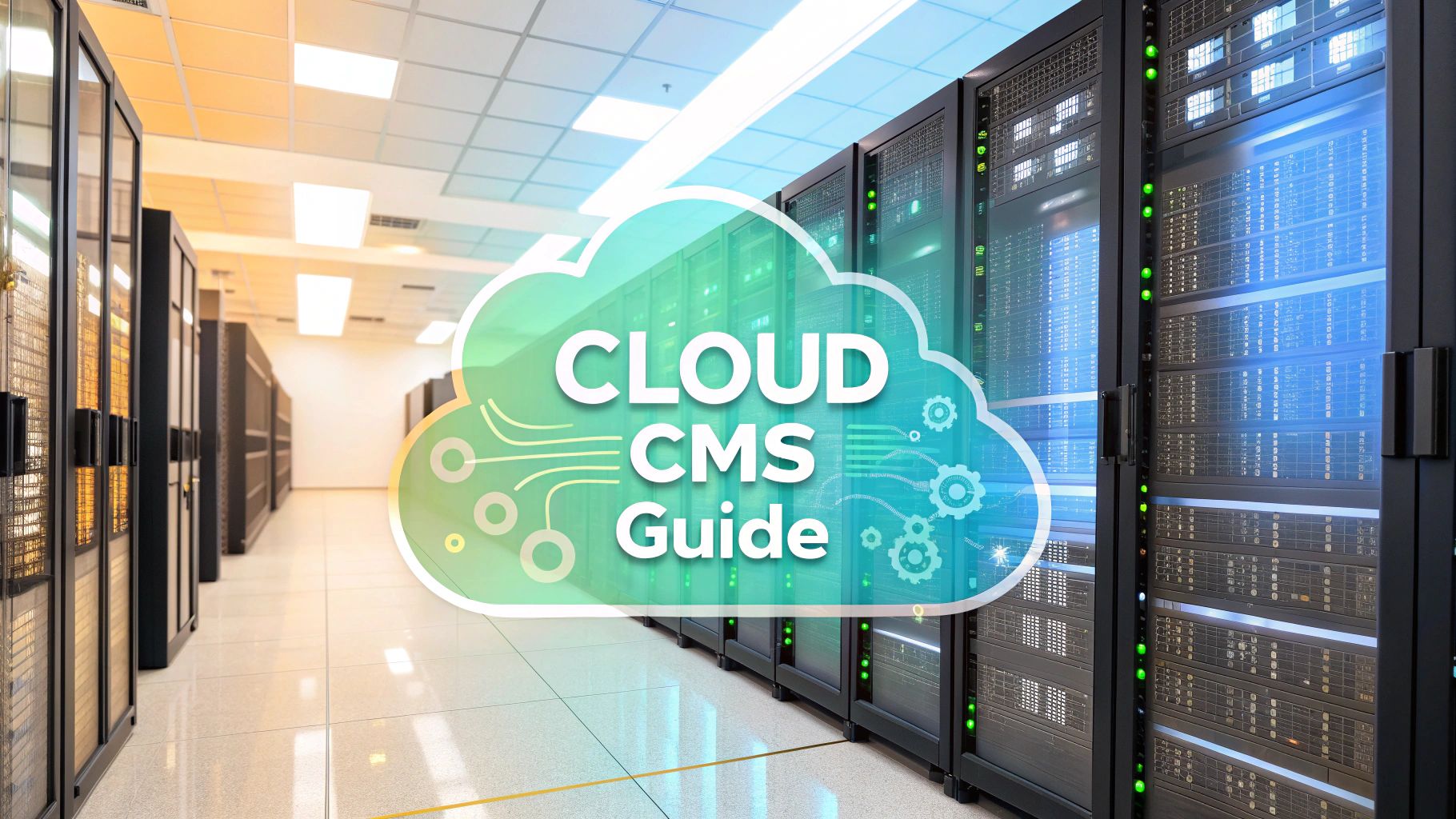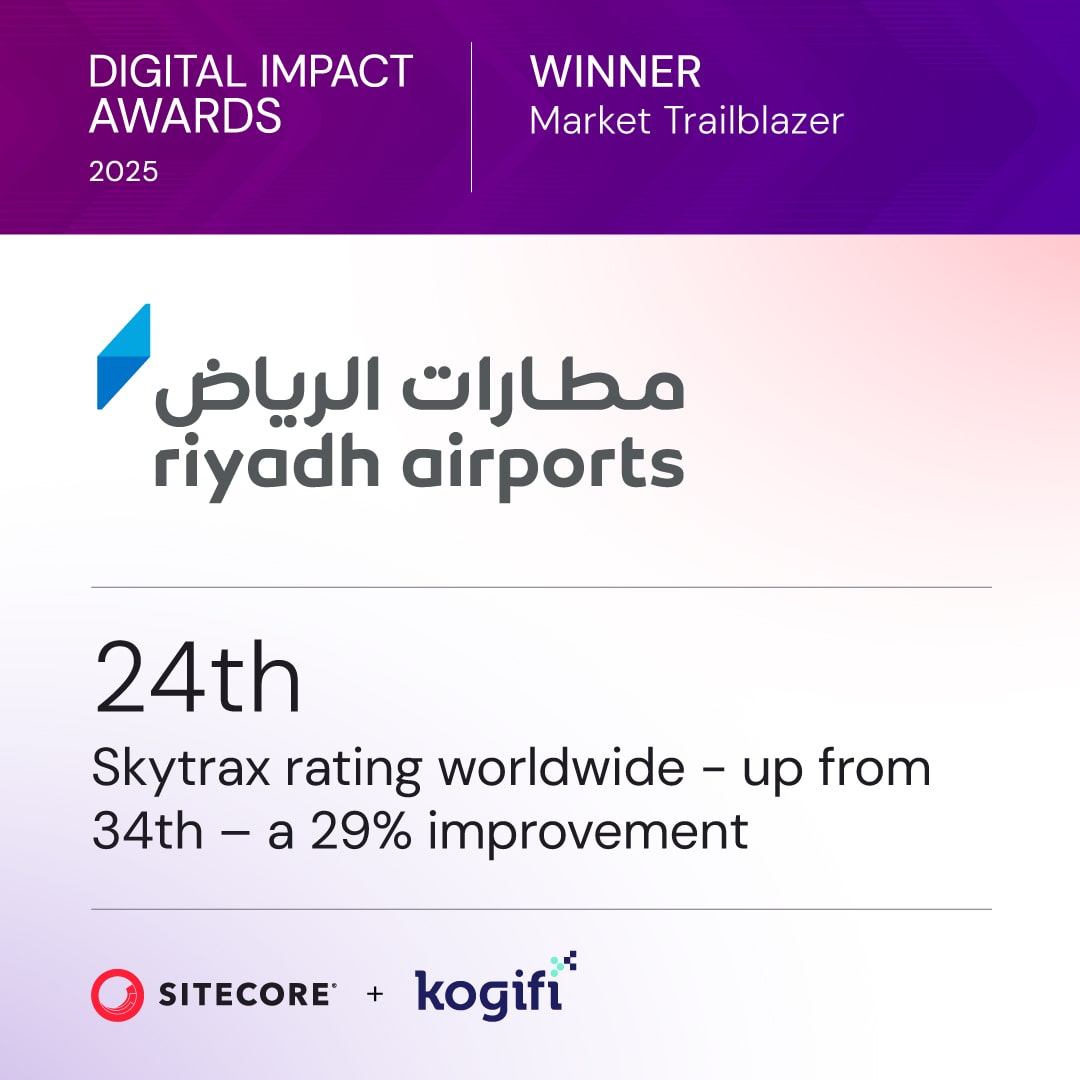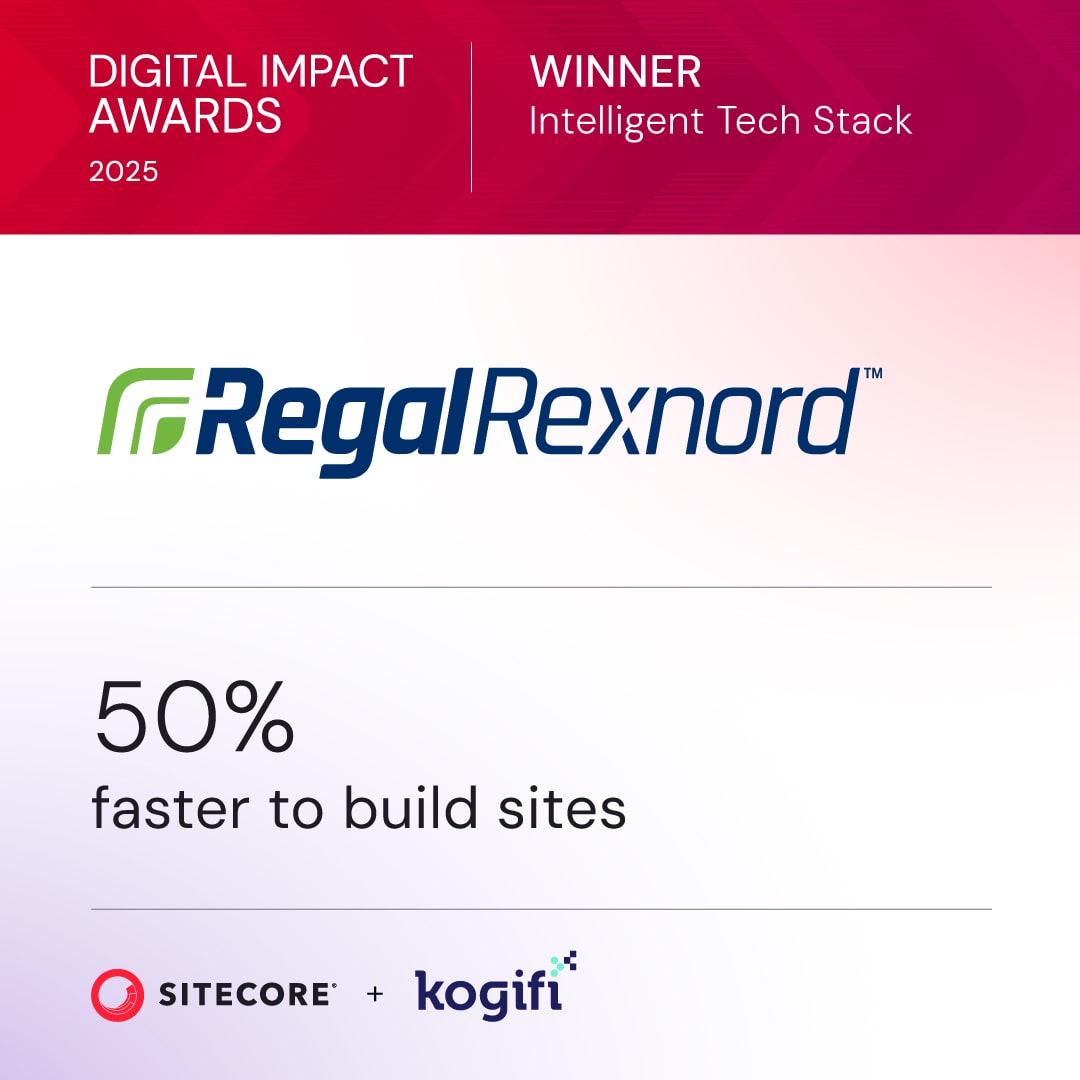A cloud-based CMS is a content management platform that lives on the internet, hosted and looked after by a third-party provider. This completely flips the script on traditional website management, freeing businesses from the headache of running their own servers so they can focus on creating great content, not maintaining infrastructure.
Moving Beyond On-Premise Limitations
Let’s cut through the technical jargon. A cloud-based CMS isn't just an upgrade—it's a totally different way of thinking about your digital presence. Think of it like this: would you rather build and maintain your own power plant in the office basement, or just plug into the grid?
With traditional, on-premise systems, you're the one buying, managing, and securing all the hardware and software. This puts a massive strain on your IT team, who have to juggle everything from server setup and software updates to security patches and disaster recovery. It's a costly, capital-heavy model that often pulls focus away from what your business actually does.
A cloud CMS, on the other hand, works more like a utility. You get access to powerful, enterprise-grade content tools on demand, while a team of experts handles all the messy, complex stuff behind the scenes.
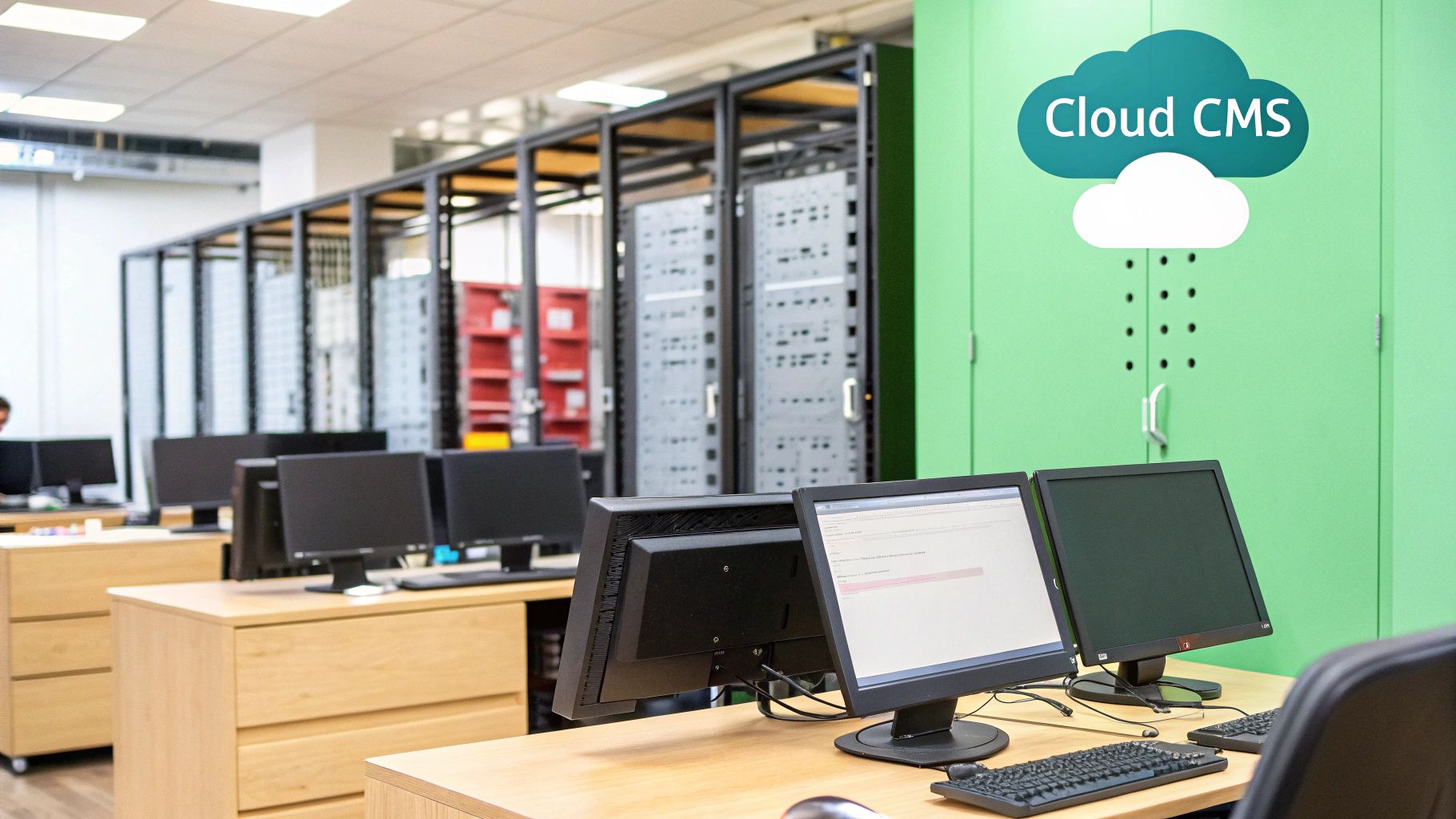
The Power of Managed Infrastructure
This hands-off approach pays off almost immediately. Your teams are no longer stuck in a reactive cycle of server maintenance and troubleshooting. Instead, they can pour that energy into what really moves the needle: creating amazing digital experiences that customers love.
This managed model brings several key advantages to the table:
- Reduced Operational Overhead: No more in-house server management means significant savings in both time and money.
- Enhanced Security: Cloud giants like Microsoft Azure pour billions into security, offering a level of protection that’s nearly impossible for most companies to replicate on their own.
- Automatic Updates: The provider handles all software updates and security patches, so your platform is always up-to-date and secure without you lifting a finger.
- Predictable Costs: You shift from large, unpredictable capital expenses (CapEx) to a straightforward, subscription-based operational cost (OpEx).
This fundamental change is what allows advanced platforms like Sitecore to really shine. For a great example of a managed, cloud-native content platform in action, check out the Elementor Cloud Website, which bundles hosting and builder tools into one package.
By abstracting away the hardware, a cloud based CMS system empowers marketing and content teams to act with greater speed and agility. They can launch campaigns, update content, and deploy new experiences without getting bogged down by IT bottlenecks.
This kind of agility is non-negotiable in today's market. Platforms like Sitecore build on this cloud foundation to deliver sophisticated personalization and data analytics. In the same way, SharePoint Online uses the cloud to offer secure, accessible document management for internal teams. At the end of the day, the cloud model is the engine that drives the innovation you need to compete and win.
The Business Case for a Cloud CMS
Moving to a cloud-based CMS isn't just an IT upgrade; it's a strategic business decision that delivers real-world results. These platforms are designed to drive growth, improve agility, and lock down security in ways that older, on-premise systems simply can't match. The biggest impact often comes when the stakes are highest.
Picture this: you're launching a major marketing campaign. With a traditional setup, a massive traffic spike could easily overwhelm your servers. The result? A crashed website, lost sales, and a serious blow to your brand's reputation. A cloud CMS, especially one built on a robust platform like Microsoft Azure, completely sidesteps this problem.
Scalability is no longer a worry. The system automatically adjusts, allocating more resources to handle the surge without anyone lifting a finger. This ensures your site stays up and running, delivering a smooth experience for every visitor, right when it matters most.
Financial Predictability and Cost Optimization
One of the most immediate and welcome changes is the shift in how you pay for your CMS. On-premise systems demand a huge upfront investment—what we call Capital Expenditure (CapEx). You're buying servers, software licenses, and finding physical space to keep it all. After that, you're on the hook for unpredictable maintenance costs.
A cloud based CMS flips that model entirely. It moves you to a predictable Operational Expenditure (OpEx) model, where you pay a straightforward subscription fee. This makes budgeting a breeze and frees up your cash flow. You're no longer guessing how much server capacity you'll need in three years; you just pay for what you use today.
This financial agility is a huge reason why the market is booming. Leading platforms in the cloud space, such as those from Sitecore and Microsoft, demonstrate a clear trend towards SaaS models that offer businesses more flexible and cost-effective digital tools.
To illustrate the differences more clearly, let's compare the two models side-by-side.
On-Premise CMS vs. Cloud-Based CMS: A Strategic Comparison
This table breaks down the core differences between sticking with a traditional on-premise CMS and making the switch to a modern cloud solution. It highlights how each approach impacts everything from your budget and security to your team's ability to innovate.
Ultimately, the choice depends on your organization's priorities. On-premise offers maximum control for those who need it, but the cloud model provides the agility, security, and cost-efficiency that most modern businesses require to stay competitive.
Enterprise-Grade Security and Compliance
In a world of ever-present cyber threats, protecting your digital assets is non-negotiable. Major cloud providers like Microsoft pour billions of dollars into their security infrastructure every year—a level of investment most companies could never dream of matching on their own.
When you use a cloud solution like Sitecore's cloud offerings or SharePoint Online, you're essentially inheriting that world-class security. This isn't just basic protection; it includes:
- Advanced Threat Protection: Constant, proactive monitoring to stop sophisticated cyberattacks before they can do damage.
- Automated Security Patching: The provider handles all security updates, closing vulnerabilities the moment they're found.
- Compliance Certifications: Cloud providers maintain certifications for global standards like GDPR and SOC 2, which dramatically simplifies your own compliance burden.
This managed approach not only protects your brand and customer data but also lets your team stop worrying about security and start focusing on what they do best.
By handing off infrastructure security to a dedicated provider, your internal teams are freed from the constant grind of threat monitoring. They can finally focus on the strategic initiatives that actually drive the business forward.
Accelerating Time-to-Market
A cloud based CMS is a collaboration powerhouse. With a single, centralized platform that your teams can access from anywhere, the old headaches of version control and communication delays disappear. Global marketing and content teams can finally work together seamlessly, in real-time.
This connected environment drastically cuts down the time it takes to create content and launch campaigns. A modern cloud CMS also plays nicely with the latest digital marketing tools, making it a solid foundation for strategies that use things like generative AI SEO software. Being able to quickly integrate new tools and get initiatives out the door gives you a serious competitive advantage, letting you jump on market opportunities faster than ever.
The Power of Headless and Composable Architecture
Modern cloud CMS platforms are built on an architectural foundation that completely changes the game for managing and delivering digital content. The two ideas driving this shift are headless CMS and composable architecture, both of which are central to platforms like Sitecore. These approaches help businesses break free from rigid, all-in-one systems and move toward a more flexible, future-proof model.
A headless CMS essentially separates your content from its final presentation. Think of all your content—articles, product descriptions, images—as a single source of truth stored in a central hub. This "body" of content is completely detached from the "head," which could be a website, a mobile app, or any other digital channel where it gets displayed.
This decoupling is a game-changer. It means you create a piece of content once and publish it everywhere, from a desktop website to a smartwatch app, without having to recreate it for each channel. This is the key to delivering a truly consistent omnichannel experience. For a deeper dive into how this stacks up against older methods, you can learn more about headless CMS vs. traditional CMS.
Embracing the Composable DXP
Taking the headless concept a step further, we arrive at the composable Digital Experience Platform (DXP). Imagine building your perfect digital platform with a set of best-in-class LEGO blocks. Instead of being stuck with a single vendor’s tools for everything, you get to pick and choose the best solution for each specific need—search, personalization, commerce, analytics—and seamlessly connect them.
Sitecore is a huge advocate for this model. Their product suite, including solutions like XM Cloud, is designed to be the core of a composable stack. You could integrate Sitecore's powerful personalization engine with a third-party e-commerce platform and a specialized search provider, creating a custom tech stack that perfectly matches your business needs.
A composable architecture gives you ultimate flexibility. You are no longer tied to a monolithic suite, allowing you to adapt and evolve your digital capabilities by swapping individual components without disrupting the entire system.
This concept map below illustrates the core benefits that empower such flexible architectures in a cloud environment.
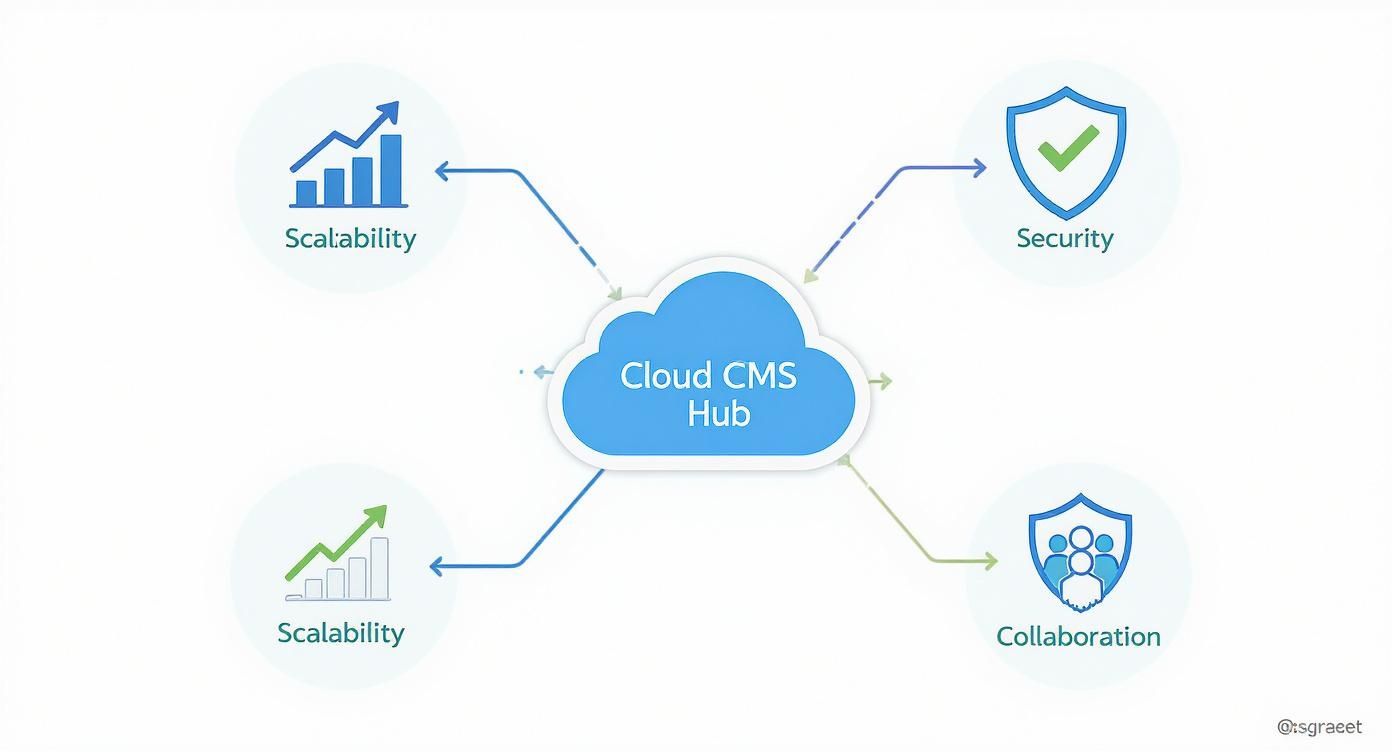
As the visualization shows, scalability, security, and collaboration are the foundational pillars that support the dynamic, interconnected nature of a composable DXP.
Why This Architecture Matters for Your Business
Switching to a headless and composable approach offers some serious strategic advantages. For starters, it allows your business to innovate faster. Your development teams aren't held back by a rigid, coupled frontend, so they can build new digital touchpoints using modern technologies without waiting for the backend to be reconfigured.
This model also prevents vendor lock-in and helps ensure your platform never becomes obsolete. As new and better tools pop up, you can easily integrate them into your stack. That kind of agility is crucial for staying competitive and meeting ever-changing customer expectations.
Here’s how this architecture translates to real-world benefits:
- Faster Time-to-Market: Launch new digital products and experiences more quickly by reusing content and developing frontends independently.
- Future-Proofing: Easily adopt new channels and technologies, like IoT devices or virtual reality, as they become relevant to your audience.
- Optimized Performance: Deliver blazing-fast experiences by using modern frontend frameworks that are built for speed.
- Developer Freedom: Allow your development teams to work with the tools and frameworks they know best, leading to better and more efficient outcomes.
Even platforms like SharePoint, while not a composable DXP in the same way as Sitecore, benefit from this API-first mindset. Through the Microsoft Graph API, SharePoint content and data can be integrated into custom applications, intranets, and workflows, extending its reach far beyond its native interface.
This really shows how decoupling content from presentation adds value across different types of cloud based CMS systems, whether they're for external customer experiences or internal collaboration. Ultimately, this architectural shift is about building a digital foundation that is as resilient and adaptable as your business needs to be.
A Deep Dive Into Sitecore's Cloud DXP
When you start talking about serious, enterprise-level digital experiences, the name Sitecore always comes up. It’s far more than just a place to store content. Sitecore's cloud offerings are a full-blown Digital Experience Platform (DXP) built to take businesses beyond just publishing articles and into the world of hyper-personalized, data-driven customer conversations.
The whole strategy behind Sitecore’s cloud DXP is its composable architecture, which is the star of the show in their main SaaS product, Sitecore XM Cloud. Think of it this way: instead of buying a pre-packaged meal with sides you might not want, you get to hand-pick the best-in-class tools for every single function, creating a digital stack that’s perfect for your business.
This freedom lets you plug Sitecore’s incredible content and personalization tools into whatever e-commerce, CRM, or analytics platforms you already love and use. It’s a huge competitive edge because it means you can adapt to market shifts and customer demands on the fly.
Powering Personalization With a Unified Customer Profile
Where Sitecore really flexes its muscles is in its ability to understand and act on customer data. The Sitecore Customer Data Platform (CDP) is the powerhouse driving this. It pulls in customer interaction data from everywhere—website visits, app usage, email opens, even in-store purchases—and stitches it all together to create rich, 360-degree profiles of each user.
Having that unified view is everything. It lets marketers stop shouting generic messages and start delivering experiences that are genuinely relevant to each person. For instance, a returning visitor who was looking at hiking boots last week could be greeted with content about new mountain trails, while a brand-new visitor gets a welcome offer. That’s the kind of real-time personalization that builds loyalty and drives sales.
Sitecore transforms content from a static asset into a dynamic tool for conversation. By connecting its powerful CMS with a deep understanding of the customer through its CDP, it enables brands to deliver the right message, on the right channel, at the exact right moment.
The platform’s marketing automation tools then take all that rich data and put it to work. Marketers can map out complex, multi-stage customer journeys that nurture leads and guide people smoothly through the sales funnel. Whether it’s personalized email campaigns or dynamic content that changes right on the site, Sitecore automates the delivery of these tailored interactions at scale.
The Strategic Advantages of a SaaS Delivery Model
Sitecore's move to a Software-as-a-Service (SaaS) model with products like XM Cloud brings massive operational perks. The SaaS approach takes the headache of managing infrastructure off your plate, freeing up your team to focus on strategy and creating great experiences.
Here are a few key wins from this model:
- Automated Updates: Sitecore handles all platform updates and security patches automatically. Your system stays current without needing a massive IT project every time.
- Enterprise-Grade Security: Built on Microsoft Azure, Sitecore’s cloud platform inherits top-tier security protocols, keeping your brand and customer data safe from threats.
- Faster Deployments: Since Sitecore manages the infrastructure, your development teams can roll out new features and experiences much more quickly, getting you to market faster.
This managed, hassle-free environment is a big reason why the cloud-based content management market is set to explode. Businesses are flocking to cloud-native platforms like those from Sitecore to cut IT costs and become more agile. You can find more details on this growth at archivemarketresearch.com.
Top brands everywhere are using Sitecore to build the kind of seamless, omnichannel experiences that customers now demand. For any organization serious about its digital presence, getting to know a DXP like Sitecore is a must. By pairing a headless architecture with powerful data and marketing tools, Sitecore gives you a solid foundation for building a digital strategy that wins.
Using SharePoint Online for Internal Content
While platforms like Sitecore master the external, customer-facing digital experience, another powerhouse in the cloud based cms system world absolutely owns the internal content landscape: SharePoint Online. It's important to see SharePoint not as a rival to a DXP like Sitecore, but as its essential counterpart.
SharePoint is, without a doubt, the cloud solution for the modern digital workplace. Its whole purpose is to be the central nervous system for corporate intranets, secure document management, and seamless team collaboration. If Sitecore builds bridges to your customers, SharePoint builds them between your employees.

The Backbone of the Microsoft 365 Ecosystem
SharePoint's biggest advantage is its deep, native integration within the Microsoft 365 ecosystem. It doesn’t just sit alongside your other tools; it underpins them. Think of it as the foundational content layer for the apps your teams are already using every single day.
When your team collaborates on a file in Microsoft Teams, that document actually lives in a SharePoint site. When you co-author a report with a colleague, it’s SharePoint's version control and permissions working silently in the background. This tight integration creates fluid, natural workflows that just make work easier.
Key integrations include:
- Microsoft Teams: Every team’s channel is backed by its own SharePoint site, providing a powerful file library.
- Outlook: Users can share links to SharePoint documents right from their inbox, making sure everyone is working from a single source of truth.
- OneDrive for Business: While OneDrive is for an individual’s work files, SharePoint is for the team and organizational content, and both sync together perfectly.
This interconnected web ensures all your content is managed centrally and securely, no matter which app an employee uses to access it. To get a better sense of its capabilities, you can explore more about SharePoint solutions and services.
Uncompromising Security and Compliance
For organizations in highly regulated fields like finance or healthcare, security isn't just a nice-to-have—it's a deal-breaker. Built on the rock-solid foundation of Microsoft Azure, SharePoint Online comes loaded with a formidable suite of security and compliance tools.
Features like Data Loss Prevention (DLP) policies, sensitivity labels, and advanced eDiscovery give administrators fine-grained control over company data. These tools are designed to prevent the accidental or malicious sharing of sensitive information, a critical function for any internal content platform.
This laser focus on internal governance is what really sets it apart. SharePoint is built to manage the entire lifecycle of internal content—from creation and real-time collaboration all the way to secure archiving and legally compliant disposal.
The market is clearly leaning into cloud solutions. Projections from industry analysts underscore the rapid adoption of SaaS-based platforms. While cloud solutions lead, on-premises systems maintain relevance in regulated sectors prioritizing data sovereignty, showing the diverse needs of modern organizations. You can get more insights on CMS market trends and drivers on globenewswire.com.
SharePoint Online provides the secure, collaborative framework that empowers employees to do their best work. It is the organizational memory and the collaborative workspace, all unified in a single, secure cloud platform.
By handling the internal content lifecycle with such precision, SharePoint frees up a DXP like Sitecore to focus entirely on its own mission: crafting exceptional external customer experiences. Together, they form a complete digital strategy.
How to Choose the Right Cloud CMS
Picking the right cloud-based CMS is a major decision, one that will define your digital strategy for years to come. The process shouldn't start with a flashy features list. Instead, it begins with a hard look at your core business goals. Before you even glance at a platform, you need to know what success actually looks like for your organization.
The first question is always about purpose. Are you trying to craft sophisticated, personalized customer journeys that boost revenue and keep people coming back? If your main goal is mastering the external digital experience with sharp analytics and content that works on any channel, you’re probably heading toward a Digital Experience Platform (DXP) like Sitecore.
Or is the real need internal? Maybe you need to build a secure, central hub for your teams to collaborate, manage documents, and handle corporate communications. If the mission is to make internal workflows smoother and create a unified digital workplace, then a platform like SharePoint Online is the obvious choice.
Key Evaluation Criteria
Once you’ve settled on your primary goal—customer-facing experience versus internal collaboration—you can dig into a more detailed evaluation. A simple feature-to-feature comparison won’t cut it. You have to look at how a platform fits into your day-to-day operations and where you want to be in the long run.
Think about these critical points:
- Integration Capabilities: Your CMS can't be an island. How well does it connect with your existing marketing stack, CRM, and ERP systems? The true power of a Sitecore implementation, for example, is unlocked when it’s seamlessly connected to your sales and marketing automation tools.
- Total Cost of Ownership (TCO): Look past the sticker price. You need to account for the costs of implementation, customization, team training, and ongoing support. While a SaaS model like Sitecore XM Cloud offers predictable monthly expenses, you have to understand the complete financial commitment.
- Scalability Requirements: Your platform needs to grow with your business. Can it support your global ambitions? Will it handle the massive traffic spikes that come with a major campaign launch? Cloud platforms like Sitecore and SharePoint are built on Microsoft Azure and offer incredible scalability, but you still need to confirm it aligns with your own growth projections.
The best way to think about a CMS is not as a single tool, but as the central hub of your entire digital ecosystem. The right choice is the one that connects and empowers all your other technologies to deliver on specific business outcomes.
Making an Informed Investment
Finally, take a close look at the vendor’s roadmap and the kind of support they offer. A great partner provides more than just software; they bring expert guidance, solid documentation, and reliable support to the table to make sure you succeed.
For a deeper dive into choosing the right platform for larger organizations, check out our guide on the best CMS for enterprise. By carefully weighing your business goals against these practical criteria, you can make a smart investment that lines up perfectly with your digital strategy and drives results you can actually measure.
Still Have Questions?
Got a few more questions rattling around? You're not alone. Let's tackle some of the common ones that come up when people are trying to figure out the right cloud CMS strategy for their business.
Sitecore XM Cloud Versus SharePoint Online
This is a classic "apples and oranges" comparison. The biggest difference between Sitecore XM Cloud and SharePoint Online boils down to who the platform is built for.
Sitecore is a full-blown Digital Experience Platform (DXP). Its entire reason for existing is to help you build, manage, and personalize sophisticated public-facing websites and customer experiences. Think marketing campaigns, deep analytics, and connecting with customers across countless channels.
SharePoint Online, on the other hand, is all about internal collaboration. It's the engine behind company intranets, team project sites, and secure document libraries within the Microsoft 365 world. While you can technically publish a simple public site with it, that's not its primary job. If you need complex, data-driven digital marketing, Sitecore is engineered for it from the ground up.
Is a Cloud CMS Secure Enough for Sensitive Corporate Data?
Absolutely. In fact, it's often more secure than what most companies can manage on their own. Leading cloud providers like Microsoft Azure—which powers both Sitecore’s SaaS products and SharePoint—invest billions of dollars into their security infrastructure. That's a level of protection most individual businesses simply can't match.
These platforms come with layers upon layers of security built right in:
- Advanced threat protection and automatic security patches.
- Strict identity and access controls to ensure only the right people see the right things.
- Heavy-duty compliance certifications like GDPR, HIPAA, and SOC 2.
For a platform like SharePoint, you also get features like Data Loss Prevention (DLP) and sensitivity labels that give you incredibly fine-grained control over internal files, making it a fortress for your corporate data.
A composable architecture offers immense business agility. Instead of being locked into a single, monolithic suite, you can pick best-of-breed services and connect them via APIs. This means you can adapt to new market trends and integrate technologies faster.
This flexibility is a game-changer. It lets you build a digital experience stack that perfectly fits what your business actually needs. If a better tool for a specific job comes along tomorrow, you can swap it in without having to tear down and rebuild your entire system. This approach helps you avoid getting locked into one vendor and keeps your platform from feeling outdated.
Ready to build a powerful, future-proof digital presence? Kogifi specializes in implementing and optimizing enterprise-grade DXP and CMS solutions. Discover how our expertise can drive your business forward at kogifi.com.

















